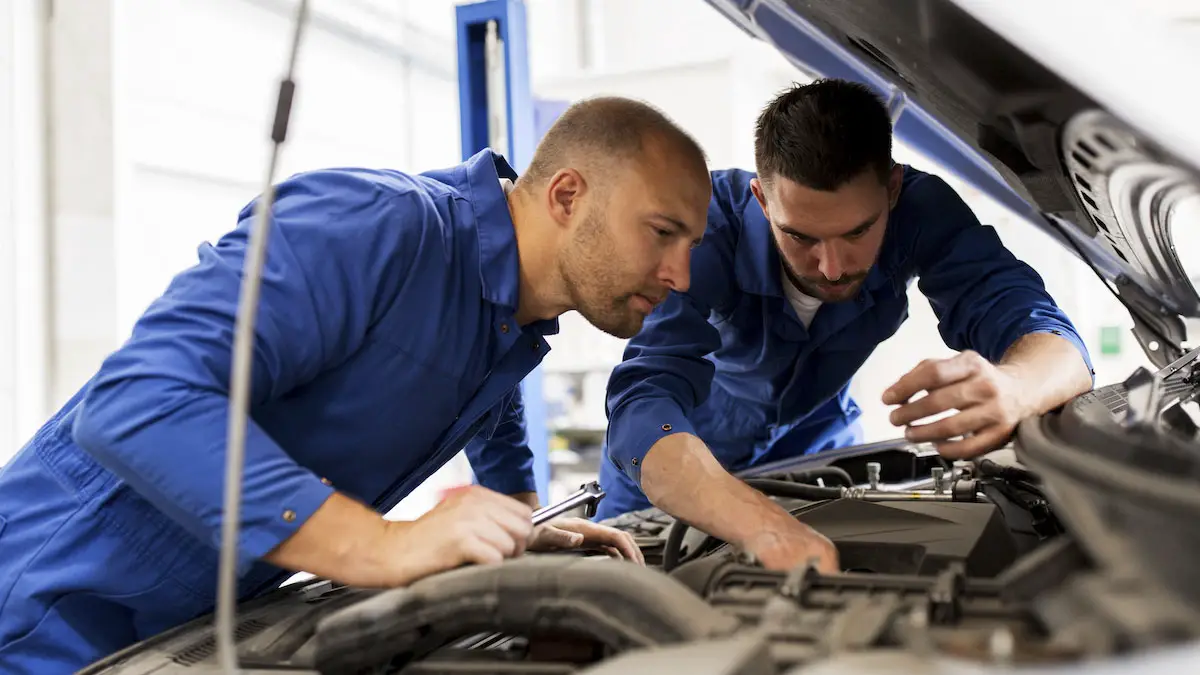A car is the easiest way to move around for work, school, and daily life unless you live in a city with good public transportation. Buying a new car is expensive, so you want your current car to last as long as possible.
Basic maintenance and service will ensure that your car continues to drive safely. In this article, we share the car parts you need to replace more often.
1. Alternator
The alternator provides power to your car’s electrical system and keeps the battery charged. A trained mechanic can test the alternator to make sure it’s really causing your car’s issues.
An alternator can fail after five to six years of driving. The common signs of a failing alternator include the car stalling, dim headlights, or grinding noises.
An alternator may fail due to normal wear and tear or a loose serpentine belt. Sometimes internal parts can become dirty or clogged, causing the alternator to stop functioning.
Car owners should schedule regular service and maintenance for an alternator inspection. If you plan on jump-starting your car, connect the cables the right way to prevent damage to the alternator.
2. Brake Pads
As a responsible driver, you understand the importance of brake pads. Every time you brake, you use the brake pads, so you’ll have to replace them.
Most drivers should replace their car’s brake pads every 30,000 to 70,000 miles or every three to five years. In cities where traffic is heavier, the brake pads may need a replacement sooner.
Large and heavy vehicles tend to wear out brake pads faster than smaller ones. Cars with a manual transmission can increase the lifespan of their brake pads by downshifting instead of using brakes.
If you notice a squealing sound or steering wheel vibrations while braking, your brake pads have worn out. In some vehicles, an indicator light will appear on the dashboard, notifying you to replace the brake pads.
3. Engine Air Filter
Engine air filters protect your engine from external pollutants that can enter and damage the engine. A new, clean air filter will increase the efficiency of your car.
A dirty air filter will cause your car to suffer from bad fuel economy and low performance. The check engine light may illuminate when the onboard systems detect that the engine is not receiving enough air.
Car owners should replace their air filters annually or every 12,000 miles. Driving through dusty environments may require you to change the air filter more often.
The benefits of regularly replacing the air filter include lower emissions and longer engine life. Air filters sit under the hood, and a mechanic can visually inspect them for dirt and debris.
4. Timing Belt
A car can sustain serious engine damage if the timing belt suddenly breaks. That’s why it’s important to replace the timing belt every eight years or 100,000 miles.
Timing belts usually do not display clear signs of use. Certain vehicles may have unique specifications, so consult the owner’s manual to learn more about replacement.
Rather than waiting until a timing belt breaks, it’s more cost-effective and safer to replace it in advance. The best way to maintain your car is to be proactive. Many mechanics also recommend replacing the timing belt and water pump at the same time.
5. Spark Plugs
On startup, your car’s engine receives power from small explosions of fuel generated by spark plugs. To maintain your car’s performance, you should have clean spark plugs.
Dirty spark plugs can prevent your car from starting, reduce gas mileage, or cause slow acceleration. If you’re experiencing car problems, you should first check your spark plugs.
Spark plugs need replacement every 100,000 miles, or every eight years. However, high-performance spark plugs tend to wear out faster than standard plugs.
6. Battery
The car usually won’t start if its battery is dead. A car battery will last between three and five years if you remember to turn off your headlights.
If you live in an extremely hot climate, your car battery may last as little as two years. When it becomes difficult to start your car, consider replacing the battery.
Other signs of imminent battery failure include clock resetting, frequent jump starts, or ignition clicks. One of the major causes of car battery failure is corrosion.
As a result, your car’s alternator will be unable to recharge the battery. A battery is one of the car parts you need to replace more often.
7. Oil Change
Oil changes are a part of the regular maintenance every car needs. Car owners should have an oil change every three to six months (3,000 to 5,000 miles).
Many automotive repair shops place a sticker to remind you of the next oil change. You should change the oil right away if you see the low oil dashboard light indication.
Perform an oil check every month to ensure your vehicle is not leaking or burning oil. The oil will need changing if it’s murky or opaque. If it’s milky, that indicates a coolant leak.
8. Lights
A well-maintained car’s headlights must shine and its turn signals must blink. The likelihood that either of these light bulbs will burn out is low.
After a certain number of hours, the headlights will need replacement. High-intensity discharge bulbs have a lifespan of about 2,000 hours, while traditional halogen bulbs last for 500 to 1,000 hours.
Turn signal bulbs usually have a capacity of 4,000 hours. These days, many new cars come with LED lights, which can run for 30,000 hours.
9. Fuel Pump
A fuel pump transports gasoline from your car’s gas tank to the engine. Fuel pumps need replacement every 50,000 miles, but some can last for up to 100,000 miles.
A fuel pump can suffer regular wear and tear or sustain damage from rust. Most fuel pumps have switched from mechanical to electrical systems.
These fuel pumps are less likely to fail since they have fewer moving parts. A second benefit is that they operate at a lower temperature, as they stay immersed in cool gasoline, reducing any fire risks.
Common signs of a defective fuel pump include trouble starting, low fuel efficiency, or stalling. The engine may stutter while driving if the car doesn’t receive adequate fuel.
10. Wiper Blades
If it’s raining or snowing, you must keep your windshield wipers in good condition so you can see where you’re going. You should replace your wiper blades every six to 12 months.
Based on your location and driving habits, you may need new wiper blades sooner. Different types of windshield blades also have different change intervals.
Beam wiper blades offer strong weather protection and tend to last longer than conventional blades. Check your wiper blades every time you get an oil change to stay on top of your replacement intervals.

Garry is the happy owner of a funky 2018 Nissan Juke Ti-S AWD. After growing up around his family’s mechanics shop, he is passionate about bringing budget-friendly car care to every driver. Garry has a business degree and is a car enthusiast.

